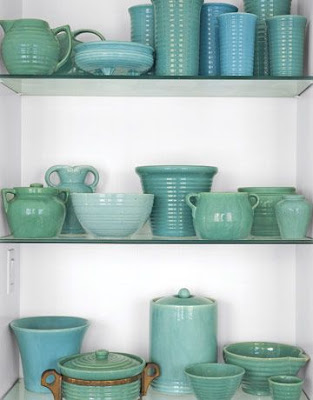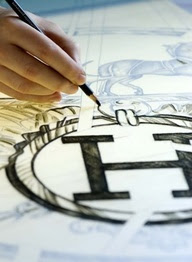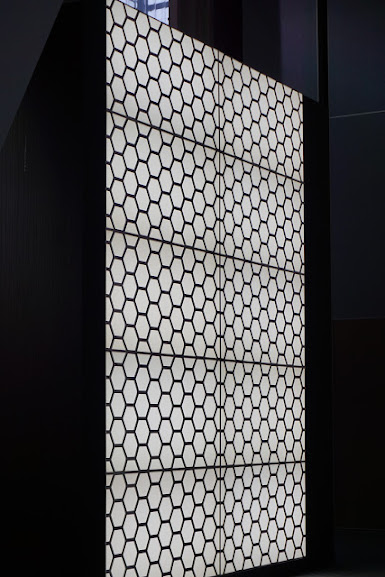Why In Design column: McCoy, History and Lore Of This American Pottery
select pieces from my American pottery collection

Nest by Tamara's Why In Design:
A Passion For This Special Antique
American Pottery, McCoy
two photos via Country Living magazine
A lil history about McCoy:
Let me share with you some history about this American pottery. First, check out the mccoy pottery collectors society, serving up a treasure trove of information and even offering a membership for those with a passion for collecting. For almost 100 years, McCoy produced the finest pieces many still hunt for and collect today. Pottery in the United States flourished during the the late 1800s. During this time frame, Ohio companies McCoy, Roseville, and Hull all produced large quantities of pottery from vases to planter, cookie jars and sculpture. In 1910, Nelson McCoy established the Nelson McCoy Pottery Co., and production of this pottery until 1933. The firm was family operated for 57 years until they sold it in 1967, with Nelson McCoy, Jr., staying on in the firm as acting president. The company was sold yet again in 1985. Common marks seen on the pieces from the years 1939 include the word "McCoy" in combination with the word "USA" and if you turn over the pieces these stamps are usually on the bottom. Of course, as with all antiques, there are a good amount of knock offs or fakes, so when shopping, be careful to choose wisely. I personally like to mix McCoy with other American pottery, and although they are all different in style, the detailing, shape and feeling are similar.
Happy Nesting
XO Tamara
A Passion For This Special Antique
American Pottery, McCoy
two photos via Country Living magazine
McCoy
is one of my favorite antiques to collect. Why? Because compared to other antiques, it is relatively inexpensive making it easy to collect an entire grouping of this beautiful sculptural pottery. One can pick up a "Real McCoy" for under $100. When collecting any antiques, I like to give them a fresh, modern appeal so they fit well into my home or the homes of my clients. To me, McCoy's pitchers, vases, statues, jardines and other pieces look best grouped together (maybe on a fireplace mantel or in the open shelving in a kitchen), and I especially like grouping them in one colorway. I like the ecru and white pieces since the neutral palette highlights their modern sculptural appeal. In addition to pale tones the pottery was made in many colors from emerald green to Tiffany blue. A lil history about McCoy:
Let me share with you some history about this American pottery. First, check out the mccoy pottery collectors society, serving up a treasure trove of information and even offering a membership for those with a passion for collecting. For almost 100 years, McCoy produced the finest pieces many still hunt for and collect today. Pottery in the United States flourished during the the late 1800s. During this time frame, Ohio companies McCoy, Roseville, and Hull all produced large quantities of pottery from vases to planter, cookie jars and sculpture. In 1910, Nelson McCoy established the Nelson McCoy Pottery Co., and production of this pottery until 1933. The firm was family operated for 57 years until they sold it in 1967, with Nelson McCoy, Jr., staying on in the firm as acting president. The company was sold yet again in 1985. Common marks seen on the pieces from the years 1939 include the word "McCoy" in combination with the word "USA" and if you turn over the pieces these stamps are usually on the bottom. Of course, as with all antiques, there are a good amount of knock offs or fakes, so when shopping, be careful to choose wisely. I personally like to mix McCoy with other American pottery, and although they are all different in style, the detailing, shape and feeling are similar.
Happy Nesting
XO Tamara

a beautiful grouping of McCoy in a home; photo via BHG.com
pieces I found from etsy, ebay and in my travels, popular motifs:
animals
shells
hobnail
leaves and hobnail
Greek key
McCoy Trend Timeline:
Spot these Popular Colors and Designs of McCoy throughout time
1930s -- pastels, browns, green & blue, onyx, blending with white, ivory, red, yellow
basketweave pattern, leaves, hand painted details
1940s -- hobnail designs in pastel colors of white, yellow, aqua, lavender, coral, animals, miniatures, flower holders, matt white and glossy pink, butterfly, shell motifs, black and cream servers, turquoise
1950s -- burgundy, ivory with purple splotches, yellow with black drip, green and red drip, yellow and green drip, decorated birds, green leaves, natural colored fruit with green leaves, fruit planters, wall pockets, metallic trivet with birds, black and pink, cherry and green, chartreuse, black lids
1960s -- saddle brown, white, tangerine, iridescent colors with Mother Of Pearl, satin finishes, gloss brown, gloss green, grape patterns , lemon-yellow, orchid, orange with contrasting colors, metallics, antique gold or silver, gold effect, avocado drip, varying shapes, honey brown with black shading, antique crackle, black and red.
1970s -- orange crackle over Birchwood, wood-grain, red crackle, sunflower yellow, wood tone, happy face, multicolored flowers, different shaped planters, fruit decals, terra cotta, sandstone, high gloss textured tan, speckled gray, almond with two brown stripes, rattan exterior ovenware, blue splatter, white with flower decal.

How To Spot A "REAL MCCOY"
There are many reproductions on the market, so buyer beware. But, for me, I like to collect all ecru colored pieces so I am not as worried about it being authentic, but the more unusual the better. I love vases and jardines with shell motifs, flowers, unusual shapes and sizes. When authenticating a piece, it is a best to bring a field guide, and for McCoy a great reference to discern between a fake and real Mccoy is the
McCoy Pottery Collector's Reference & Value Guide by Hanson, Nissen
Please note, earlier authentic pieces often had the name "BRUSH" stamped in block capital letters with blooming serifs on the last and first letters, and with the initials USA stamped below. By the 1930s, the mold number was often stamped on the piece as well, and sometimes a Floraline mark. By the 1940s there was sometimes and overlapping N and M. One way to spot a fake is they are often considerably smaller than the real pieces and a real McCoy is weighty.
There are many reproductions on the market, so buyer beware. But, for me, I like to collect all ecru colored pieces so I am not as worried about it being authentic, but the more unusual the better. I love vases and jardines with shell motifs, flowers, unusual shapes and sizes. When authenticating a piece, it is a best to bring a field guide, and for McCoy a great reference to discern between a fake and real Mccoy is the
McCoy Pottery Collector's Reference & Value Guide by Hanson, Nissen
Please note, earlier authentic pieces often had the name "BRUSH" stamped in block capital letters with blooming serifs on the last and first letters, and with the initials USA stamped below. By the 1930s, the mold number was often stamped on the piece as well, and sometimes a Floraline mark. By the 1940s there was sometimes and overlapping N and M. One way to spot a fake is they are often considerably smaller than the real pieces and a real McCoy is weighty.
In summer I like to turn over every stone in East Hampton while hunting for McCoy and other pieces, the secret lies in the stamp.
sources:
Stop back soon to read posts upon our return from
Paris for Design Week!
Paris for Design Week!






















